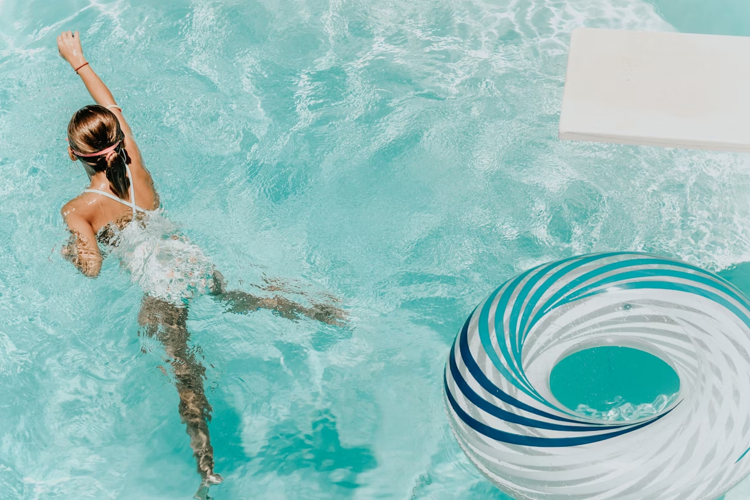
A backyard pool offers luxury, fun, and relaxation, but maintaining it is a commitment that many underestimate. When neglected or cared for incorrectly, pools can quickly become a burden instead of a benefit. Cloudy water, algae buildup, and faulty equipment are expensive to fix and potentially harmful to swimmers.
Fortunately, many pool problems are avoidable with routine attention and a clear understanding of what not to do. Avoiding common maintenance mistakes can help ensure your pool remains safe, inviting, and in excellent shape throughout the year.
Ignoring Water Chemistry and Balance
Water chemistry is the foundation of pool maintenance. A poorly balanced pool creates an environment where bacteria thrive, algae form, and equipment suffers corrosion or scale buildup. Yet, this is one of the most commonly overlooked aspects by pool owners.
Maintaining the right pH level, typically between 7.2 and 7.8, ensures chlorine works effectively. Total alkalinity and calcium hardness also affect water stability. Testing kits make this process easy and should be used at least twice a week during heavy usage seasons.
When chemistry is ignored, pool water becomes a breeding ground for problems. Swimmers may experience skin irritation or eye redness, and surfaces may deteriorate quickly than expected. Taking five minutes to test and adjust can prevent expensive repairs later.
Overusing or Misusing Chlorine
Chlorine keeps the pool sanitary, but more doesn’t always mean better. Excessive chlorine can damage liners, dry out skin, and cause an unpleasant smell. When used incorrectly, it can even create chloramines, which are responsible for that strong “pool smell” and can irritate lungs and eyes.
Chlorine tablets should be used in proper dispensers rather than being tossed directly into the water. Liquid chlorine must be measured precisely. Following dosage guidelines ensures that sanitation is effective without becoming a hazard.
If algae begins to grow despite chlorine levels, shock treatment might be needed. Yet, shocking too frequently can throw off the water balance and contribute to chemical buildup. Monitoring the pool's needs is more effective than relying on routine dosing alone.
Running the Pump for Too Little Time
Some pool owners mistakenly believe running the pump for a few hours a day is enough to keep the water clean. In reality, the pump and filter system should circulate all the water at least once daily. For most pools, this means running the pump for eight to twelve hours.
Poor circulation allows debris to settle and encourages algae and bacteria to grow in stagnant areas. Consistent filtration ensures that the pool water remains clean, distributes chemicals evenly, and removes small particles before they become larger problems.
Using a programmable timer makes managing pump operation easy. This automation helps reduce energy costs while keeping the water fresh and ready for swimming.
Relying Solely on Visual Inspection
Clear water isn’t always clean water. Some contaminants are invisible, including bacteria and unbalanced pH levels. Relying only on how the water looks can lead to missed warning signs.
Regular testing and professional servicing help catch early signs of trouble. While pool owners can manage most maintenance tasks themselves, scheduling periodic inspections ensures systems are working and no hidden problems are growing. Professionals offer targeted support for different climates and equipment setups. The team behind a Swimming Pool Maintenance Singapore company says that working with experts ensures maintenance is tailored, consistent, and protective of your long-term investment. Their services often include water analysis, mechanical checks, and detailed cleaning that go beyond basic care.
Skipping Regular Skimming and Brushing
Debris such as leaves, insects, and pollen can quickly overwhelm a pool if not removed daily. Skimming prevents these items from sinking, where they become harder to extract and may clog filters or stain surfaces.
Brushing the pool walls and floor is equally important. Algae and grime form in areas with low circulation, particularly near steps, corners, and tile lines. Regular brushing disrupts buildup and helps maintain a smooth, clean surface.
Even if the water looks clear, failing to skim and brush regularly allows organic material to accumulate. This can impact both cleanliness and chemical balance, creating unnecessary maintenance issues later.
Forgetting to Clean the Filter
Filters trap dirt and debris, keeping water crystal clear. But if the filter itself becomes dirty, its efficiency drops. A clogged filter strains the pump, reduces circulation, and leaves contaminants in the water.
Depending on the type, cartridge, sand, or diatomaceous earth, filters should be cleaned or backwashed according to the manufacturer’s instructions. This could mean rinsing weekly or backwashing monthly.
Replacing filter media or cartridges on time ensures optimal function. Filters left too long without care lose effectiveness and may require full replacement rather than simple maintenance.
Neglecting Water Level Management
A pool’s water level affects skimmer function, pump performance, and chemical distribution. Water that is too low can expose equipment to air, causing damage or failure. Water that is too high may reduce surface skimming efficiency.
Rain, evaporation, and splashing all affect water levels. Checking and adjusting this level weekly prevents mechanical strain and helps systems function properly.
Topping off or draining the pool a few inches can restore balance, and these small adjustments help avoid mechanical wear and expensive repairs down the road.
Using Mismatched or Expired Chemicals
Using the wrong chemicals or expired products creates more issues than it solves. Always read labels, store chemicals in a dry, shaded place, and check expiration dates before use.
Mixing incompatible products can cause dangerous reactions or ineffective sanitation. Following one brand's product line can simplify instructions and reduce the risk of improper combinations.
Keeping a maintenance log helps track what has been added and when. This minimizes overlap and ensures each product works as intended, avoiding buildup and water imbalance.

Owning a pool is an investment in relaxation and outdoor enjoyment. But like any investment, it requires attention to detail and regular care. By avoiding these common mistakes and committing to a structured maintenance routine, homeowners can enjoy clean, clear water all year long. When supported by expert insight and reliable tools, a pool transforms from a seasonal feature into a source of comfort, health, and pride.



(0) comments
We welcome your comments
Log In
Post a comment as Guest
Keep it Clean. Please avoid obscene, vulgar, lewd, racist or sexually-oriented language.
PLEASE TURN OFF YOUR CAPS LOCK.
Don't Threaten. Threats of harming another person will not be tolerated.
Be Truthful. Don't knowingly lie about anyone or anything.
Be Nice. No racism, sexism or any sort of -ism that is degrading to another person.
Be Proactive. Use the 'Report' link on each comment to let us know of abusive posts.
Share with Us. We'd love to hear eyewitness accounts, the history behind an article.